French Fruit

Are there any healthy French dessert options ?
The article discusses the various healthy options for French desserts. It mentions fruit-based desserts like Tarte Tatin and Clafoutis, which use fresh fruits as the main ingredient, providing natural sweetness and fiber. It also suggests using whole wheat flour or almond flour to make these desserts healthier. The article further introduces nut-based desserts such as flourless chocolate cake and walnut and almond cake, which are low in carbohydrates and high in healthy fats and protein. Finally, it concludes that there are many healthy French dessert options available that allow you to indulge in something sweet without compromising your health goals.

Where can I find the best French patisserie in Paris ?
Paris is renowned for its delectable pastries and desserts, and finding the best French patisserie can be a delightful adventure. Some of the top recommendations include Angelina, Ladurée, Pierre Hermé, Du Pain et des Idées, Pâtisserie Ciel, Gerard Mulot, Arnaud Larher, Carl Marletti, Patrick Roger, Hugo & Victor, L'Éclair de Génie, Le Moulin de la Vierge, Gosselin, and Au P'tit Suisse. Each offers their own unique twist on the classic French pastry, from traditional macarons to modern flavor combinations.

What are some unique ingredients commonly used in French desserts ?
French desserts are renowned for their exquisite taste and delicate textures, which are largely due to the unique ingredients used in their preparation. These include vanilla beans, almond meal, cream, butter, lemon zest, and kirsch. Each ingredient plays a crucial role in enhancing the flavor, aroma, and texture of French desserts. Understanding the importance and usage of these ingredients can help you appreciate the artistry behind French pastry making and even try your hand at creating your own delectable treats.

What are some traditional French desserts served during the Christmas holiday season ?
The Christmas holiday season in France is a time for indulgence, and what better way to indulge than with delicious desserts? Here are some traditional French desserts that are often served during the festive season: 1. Bûche de Noël (Yule Log) - A classic French Christmas dessert, this rolled sponge cake is filled with creamy chocolate buttercream and decorated to resemble a log. 2. Tarte de Pommes Caramélisées (Caramelized Apple Tart) - Thinly sliced apples are caramelized and arranged in a pastry shell, creating a smooth and rich custard filling. 3. Palets Breton (Breton Butter Biscuits) - Light and crispy butter biscuits from the Brittany region of France, often served alongside coffee or tea. 4. Macarons - Although not exclusively a Christmas dessert, macarons are a staple in French patisseries all year round. Festive flavors like gingerbread, peppermint, and chestnut make them perfect for the holiday season. 5. Buche de Châtaignes (Chestnut Log) - Similar to the Bûche de Noël, this chestnut-flavored sponge cake is rolled up with chestnut cream and decorated with marzipan to resemble a bark. 6. Oeillet Parfait (Parfait Pudding) - A light and airy pudding made with whipped cream and flavored with vanilla or other extracts, often served in individual glasses and topped with fresh fruit or berries. These traditional French desserts add a touch of elegance and sophistication to any Christmas celebration, satisfying every sweet tooth!

How does a traditional tarte Tatin differ from other fruit tarts ?
Tarte Tatin is a classic French dessert that differs from other fruit tarts in several ways. It is prepared by cooking the fruits first, which releases their natural juices and creates a rich, syrupy filling. The tart is then baked upside down, resulting in a beautiful presentation with caramelized fruits on top and a flaky crust on the bottom. The flavor profile of Tarte Tatin is also unique, with deep, complex flavors created by the caramelization process and a buttery crust that absorbs some of the fruit flavors. Finally, the texture of Tarte Tatin is delicate and moist, with a flaky crust and juicy fruits that create a satisfying contrast. Overall, Tarte Tatin stands out as a delicious and visually stunning dessert that is sure to delight anyone who tries it.
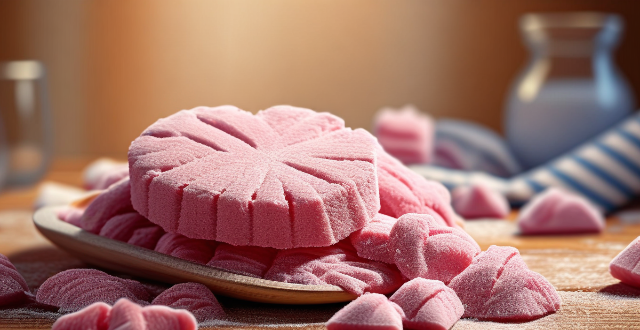
What makes macarons a quintessential French sweet treat ?
Macarons are a quintessential French sweet treat due to their origins, precise recipe requirements, variety, elegance, and cultural significance. They were perfected by the French in the mid-19th century and have become a staple in French patisseries. Despite the simplicity of the ingredients, making macarons requires precision and skill, which is emblematic of French culinary traditions. Macarons come in a wide range of colors and flavors, allowing for creativity and customization. Their small size and elegant appearance make them perfect for an afternoon tea or a light dessert. In France, baking is considered an art form, and the craft of making macarons is no exception. They are often given as gifts during special occasions, reflecting the French tradition of giving thoughtful, beautiful presents. Overall, macarons are not just a sweet treat but a representation of the beauty and refinement associated with French cuisine.

What kind of chocolate is typically used in French chocolate desserts ?
The article discusses the importance of chocolate selection in French chocolate desserts, highlighting the use of dark, milk, white, and unsweetened chocolate. It emphasizes the rich culinary heritage of France that demands quality ingredients, especially in chocolate desserts. The article also suggests considering the desired outcome of the dish, taste testing, and experimentation to find the perfect chocolate for a particular dessert.

Why is French cuisine, including desserts, considered among the finest in the world ?
French cuisine, including desserts, is renowned worldwide for its exquisite flavors, meticulous preparation, and artistic presentation. This reputation is due to factors such as historical significance, quality ingredients, artisanal methods, chef training, innovation, and attention to detail. French cuisine has a long history dating back to medieval times when it was influenced by various cultural invasions and trades. Over centuries, French chefs refined their techniques, creating a rich culinary tradition that emphasizes depth of flavor and precision in cooking methods. French cuisine places a high value on using fresh, high-quality ingredients, often sourced locally. The variety of ingredients available in different regions of France allows for a wide array of dishes and flavors. French baking traditions, such as those used in making croissants and baguettes, involve complex processes that yield exceptional results. Many French desserts, like macarons and éclairs, are handcrafted with care, ensuring each piece is of the highest quality. France is home to some of the best culinary schools in the world, where future chefs receive rigorous training. Young chefs often learn from experienced masters through apprenticeships, preserving techniques and recipes. French chefs are known for their innovative approaches to traditional dishes, pushing the boundaries of gastronomy. The integration of international flavors into classic French dishes keeps the cuisine dynamic and exciting. French cuisine emphasizes not just taste but also the visual appeal of the dish, making every meal an experience. The emphasis on all senses—smell, sight, taste, touch, and even sound—creates a comprehensive dining experience.
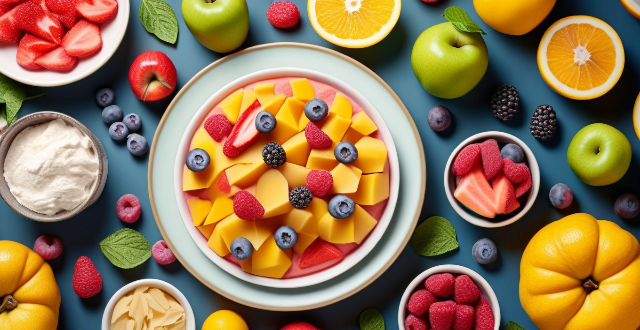
What are some creative ways to incorporate fruit into my breakfast ?
Incorporating fruits into your breakfast can add flavor, color, and nutrition to your morning meal. Here are some creative ideas: smoothie bowls with frozen fruits and topped with fresh fruits, nuts, seeds, and superfoods; fruit salad with a light honey-lime dressing served on its own or over leafy greens; pancakes and waffles mixed with mashed bananas or pureed berries and topped with fruit compote; oatmeal stirred in with diced apples, pears, or pomegranate seeds and drizzled with honey and cinnamon; toast toppings like cream cheese or peanut butter with sliced bananas or avocado slices sprinkled with hemp seeds; egg dishes like an egg white omelet filled with sautéed apples and cinnamon or a frittata made from diced tomatoes and bell peppers mixed with beaten eggs; and cereals and yogurt mixed with chopped fruits like blueberries or raspberries for a protein-packed breakfast.
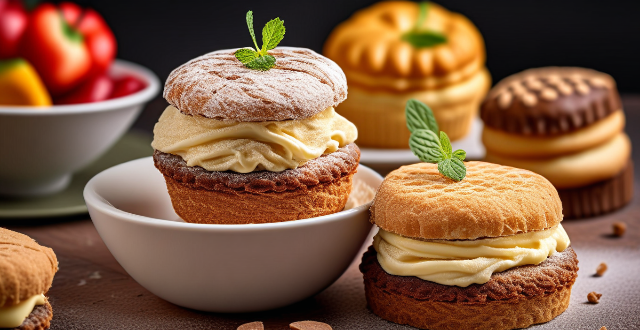
How do French desserts differ from American or British desserts ?
French desserts are known for their high-quality ingredients, precise techniques, and elegant presentation. Popular options include crème brûlée, macarons, and tarte tatin. In contrast, American and British desserts often use simpler ingredients and techniques, with a focus on convenience and taste over appearance. Popular choices include pies, brownies, and cheesecakes.

What is the history behind the French dessert, éclair ?
The éclair is a classic French dessert with a rich history dating back to the early 19th century. Originally known as "petites patisseries" or "small pastries," these early versions were made with a choux pastry shell filled with a sweet cream or custard filling. Over time, the recipe evolved and became more sophisticated, leading to the modern-day éclair with its iconic chocolate icing on top. As the popularity of the éclair grew, bakers began experimenting with different flavors and fillings, resulting in countless variations such as chocolate, coffee, pistachio, and strawberry éclairs. Today, the éclair remains a beloved dessert worldwide, enjoyed by people of all ages and cultures. Its enduring appeal and adaptability make it a true culinary masterpiece.

How do French pastry chefs achieve such delicate textures in their desserts ?
French pastry chefs are renowned for their ability to create desserts with exquisite textures that melt in your mouth. Achieving such delicate results involves a combination of precise techniques, high-quality ingredients, and meticulous attention to detail. Here's a breakdown of the key factors: 1. Mastery of Basic Techniques 2. Use of High-Quality Ingredients 3. Precision Cooking Methods 4. Creative Combinations 5. Attention to Detail

Can you suggest easy French dessert recipes for beginners ?
Easy French Dessert Recipes for Beginners French desserts are known for their elegance and flavor, but they can also be easy to make. Here are some simple French dessert recipes that even beginners can try: Tarte Tatin: - Ingredients: apples, sugar, butter, puff pastry - Steps: preheat oven, peel and core apples, melt butter and sprinkle sugar in skillet, cook apples until tender, caramelize syrup, roll out puff pastry, place over apples, bake until golden brown, cool and invert onto serving plate. Chocolate Mousse: - Ingredients: dark chocolate, eggs, sugar, heavy cream - Steps: melt chocolate, separate egg yolks and whites, beat yolks with sugar until pale and thick, beat whites until soft peaks form, fold melted chocolate into yolk mixture, fold in whites, whip cream until stiff peaks form, gently fold whipped cream into chocolate mixture, spoon into serving dishes and chill before serving. Crème Brûlée: - Ingredients: heavy cream, sugar (plus extra for topping), egg yolks, vanilla extract - Steps: preheat oven, heat cream and sugar until simmering, whisk egg yolks and sugar until combined, slowly pour hot cream into egg mixture while whisking constantly to prevent curdling, stir in vanilla extract, strain mixture through sieve into measuring cup or pitcher, pour into ramekins placed in baking dish with hot water halfway up sides of ramekins, bake until set but slightly jiggly in center, cool to room temperature then chill for at least 2 hours before serving; just before serving sprinkle each crème brûlée with thin layer of sugar and use kitchen torch to caramelize sugar until golden brown.
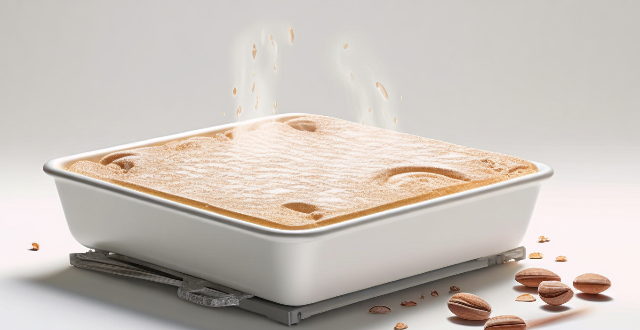
How do I make a classic French crème brûlée ?
Crème brûlée is a classic French dessert known for its rich, creamy custard and crackling caramelized sugar topping. Here are the steps to make it: Preheat the oven to 300°F (150°C), heat cream mixture with sugar and vanilla bean, whisk egg yolks with sugar, temper eggs with warm cream mixture, pour into ramekins, bake in a water bath until set but slightly jiggly, chill for at least 2 hours or overnight, caramelize sugar topping with a kitchen torch or broiler, and drizzle with caramel sauce (optional). Use high-quality ingredients for the best flavor, be patient when caramelizing sugar, and serve immediately after caramelizing for the best texture and taste.
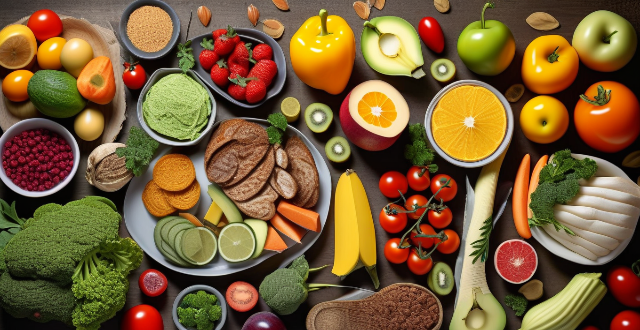
How do I incorporate more fruits and vegetables into my daily meals ?
Incorporating more fruits and vegetables into daily meals is crucial for a balanced diet, providing essential nutrients. To achieve this, start the day with fruit smoothies or salads, snack on vegetable sticks or fruit parings, include veggies in lunch and dinner through salads, stir-fries, and soups, and enjoy fruit-based desserts or healthy cookies. Plan ahead, prep fruits and vegetables in advance, and cook in bulk to simplify the process.

What are some healthy lunch box ideas for kids ?
Here are some healthy lunch box ideas for kids: - Whole Grain Sandwiches: Whole grain bread or wraps provide complex carbohydrates and fiber. Fillings like lean turkey, chicken, or hummus offer protein and flavor. Add sliced veggies like cucumbers, tomatoes, and bell peppers for extra nutrients. - Fruit and Veggie Platters: Cut up a variety of fruits and vegetables such as apples, grapes, carrots, and cherry tomatoes. Include a low-fat dip like yogurt or hummus for added fun and taste. - Yogurt Parfaits: Layer plain Greek yogurt with granola and fresh berries for a delicious treat. This combination provides calcium, protein, and antioxidants. - Quinoa Salad: Cooked quinoa mixed with roasted veggies, chickpeas, and a simple vinaigrette. This salad offers plant-based protein and essential vitamins and minerals. - Homemade Pizza Rolls: Use whole wheat tortillas as the base and top with tomato sauce, cheese, and veggies. Bake until crispy for a fun twist on traditional pizza. - Egg Muffins: Whip up mini egg muffins using eggs, spinach, cheese, and diced tomatoes. These muffins are high in protein and easy to grab on the go. - Healthy Snacks: Pack individual servings of nuts, seeds, or dried fruit for an energy boost. Choose options that are low in sugar and sodium.

What are some quick and easy breakfast recipes for busy mornings ?
Quick and easy breakfast recipes for busy mornings include overnight oats, smoothie bowls, and avocado toast. Overnight oats are made by mixing rolled oats with milk or yogurt and toppings like nuts and dried fruit, then refrigerating overnight. Smoothie bowls are made by blending fruits and vegetables with liquids, then topping with nuts or granola. Avocado toast is made by mashing ripe avocado onto toasted bread and seasoning with salt and pepper.
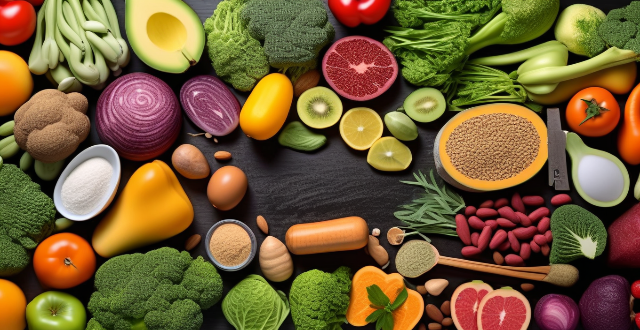
What are the key components of a healthy breakfast ?
A healthy breakfast should include a variety of nutrients to provide energy and support overall health. The key components are whole grains, protein, fruits and vegetables, healthy fats, and dairy or non-dairy alternatives. Whole grains provide complex carbohydrates, fiber, vitamins, and minerals. Protein is important for building and repairing tissues in the body. Fruits and vegetables provide essential vitamins, minerals, antioxidants, and fiber. Healthy fats are important for brain function and hormone regulation. Dairy products or non-dairy alternatives provide calcium, vitamin D, and other important nutrients. Simple combinations like oatmeal with nuts and fruit, a veggie omelette with whole wheat toast, or Greek yogurt with berries and granola can provide all the key components of a balanced breakfast.
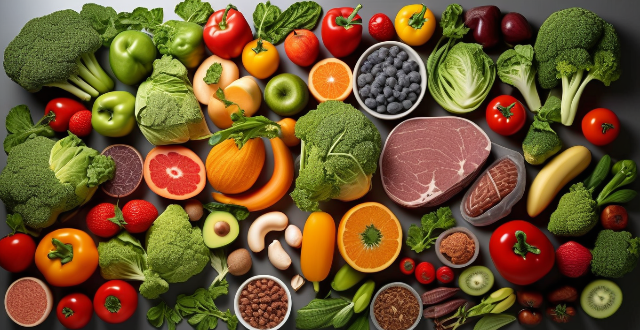
What is the ideal meal plan for an athlete's daily routine ?
An athlete's meal plan should include a variety of complex carbohydrates, lean proteins, healthy fats, and fruits & vegetables to support their training goals, optimize performance, and aid in recovery. The ideal meal plan includes breakfast with sustained energy sources like whole grains and fruits; snacks such as trail mix or protein shakes to keep energy levels steady; lunch focusing on lean proteins and leafy greens for muscle repair and nutrient replenishment; afternoon snacks like Greek yogurt or fruit smoothies to avoid energy crashes; dinner emphasizing lean proteins and complex carbs for muscle recovery and glycogen replenishment; and a pre-bed snack with slow-digesting protein and natural sleep aids like cherries or chamomile tea.
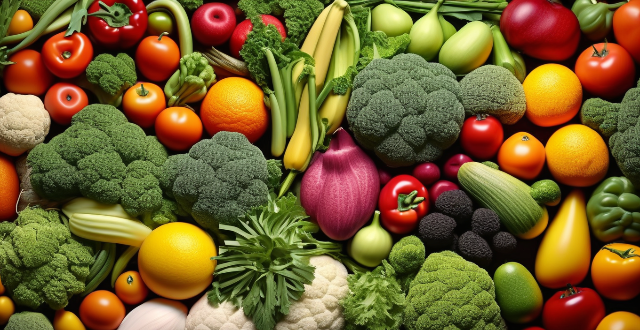
How can I make sure my fruits and vegetables are organic ?
To ensure your fruits and vegetables are organic, buyTo ensure your fruits and vegetables are organic, buy stores, grow your own using avoid contamination by washing produce thoroughly, and educate yourself on the latest research and news about organic farming.

What tools do I need to start practicing advanced mixology ?
To start practicing advanced mixology, you will needTo start practicing advanced mixology, you will need equipment to ensure that you can you will need a variety of tools and equipment to ensure that you can create high-quality drinks with precision and consistency. The essential tools for advanced mixology include shakers, jiggers, strainers, mixing glasses, muddlers, bar spoons, fruit knives and cutting boards, bottle openers and corkscrews, ice buckets and tongs, pour spouts, and miscellaneous tools such as citrus peelers, channel knives, ice scoops, and juicers.

What are the best destinations for backpacking around the world ?
Backpacking is an excellent way to explore the world, meet new people, and have unique experiences. Some of the best destinations for backpacking around the world include Paris, France; Berlin, Germany; Amsterdam, Netherlands; Bangkok, Thailand; Siem Reap, Cambodia; Hanoi, Vietnam; Buenos Aires, Argentina; Rio de Janeiro, Brazil; Cusco, Peru; Sydney, Australia; Cairns, Australia; Queenstown, New Zealand. Tips for backpacking in these regions include traveling by train or bus between countries for a cost-effective way to get around, staying in hostels to save money and meet other travelers, trying local cuisine and attending cultural events to immerse yourself in the local culture, using local transportation like buses and scooters to get around, eating at local street vendors for cheap and delicious food, learning some basic phrases in the local language to help you communicate with locals, using local buses or domestic flights to travel between countries, staying in hostels or Airbnb rentals to save money on accommodations, being prepared for diverse climates and terrains from rainforests to mountains, renting a campervan or car to explore these vast countries at your own pace, taking advantage of work exchange programs like fruit picking or farm work to extend your stay, and being prepared for extreme weather conditions from hot summers to cold winters.

Can you recommend any Michelin-starred restaurants in Paris ?
Paris is home to several prestigious Michelin-starred restaurants. Among the recommendations are Le Grand Restaurant, L'Ambroisie, Alain Ducasse au Plaza Athénée, Guy Savoy, Le Pré Catelan, and Arpège, each offering unique dining experiences with dishes that showcase seasonal ingredients and impeccable techniques. Reservations are highly recommended due to high demand.